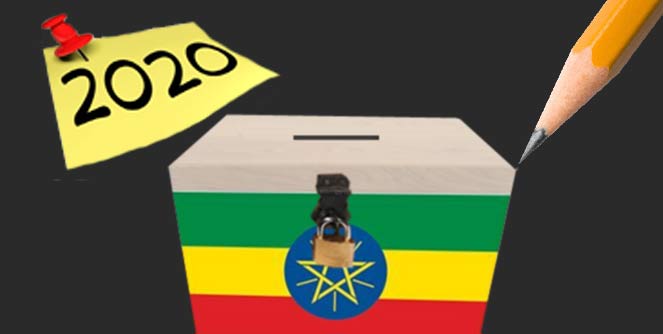September 1 Is The Answer: “Peaceful Or Armed”

September 1, 1961 is the day that 14 poorly-armed Eritreans led by Hamid Idris Awate engaged the Ethiopian army in battle and forced its withdrawal from Mt. Adal, Eritrea. The 14 Eritreans were the entirety of the Eritrean Liberation Army (ELA) of the Eritrean Liberation Front (ELF), which had been founded a year earlier. Mt Adal was not “liberated” that day—the ELA withdrew further west after the engagement, essentially pioneering the guerrilla warfare that brought about Eritrea’s independence 30 years later by the EPLA—but the fact that Eritreans could engage the Ethiopian army in battle for six hours was of immense moral boost to Eritreans everywhere who had been humiliated by Imperial Ethiopia for eight long years.
History revisionists have pulled every trick from their bag of tricks to minimize the significance of this date ever since. They have tried to defame the character of the founders of the ELF calling them “Islamist” and “Jihadist” simply because they were Muslims. They have taken the pre-armed struggle, rebellious activities of the leader of the revolution, Hamid Idris Awate, out of context, and they have attempted to present this multi-lingual, relatively well-educated military strategist as a simpleton. Latter day peaceniks have attempted to present the action of the ELF as premature foray into militarism before peaceful means, purportedly by the “peaceful” ELM—Eritrean Liberation Movement (aka Haraka or Mahber Showate) had been exhausted.
Let’s now consult the history books which tell us of Eritreans peaceful appeals to reason and how they were responded to by Imperial Ethiopia.
The Petition Only Years
On October 1, 1953, less than a month after the Eritrean Federal Government was established, Eritreans sent their first telegram to the UN (telegram number 54865) to protest the emperor’s decision to abrogate Eritrea’s federal status. This was followed by a telegram to the Emperor (telegram number 58466.)
The request was ignored.
In 1954, when Emperor Haile Selassie visited Eritrea to inaugurate a church in Massawa, he was hand-delivered appeals, telegrams and petition to reverse his action.
He responded with more encroachments on the federal arrangement.
The same year, on May 22, the Eritrean parliament met (session 328) and instructed the prime minister to request that Ethiopia desist from its provocation—a copy of the parliament’s resolution was handed to Mr. Robert Reed, the director of UN’s legislative body.
The request was ignored.
In October 1955, the Ethiopian government, through its lackeys at the Eritrean parliament amended the constitution of Eritrea and outlawed Arabic and Tigrinya as official languages and suggested the appointment of the chief Executive directly by the emperor. The Eritrean parliament sent a telegram on October 15, 1955 to protest this violation of the agreement.
The telegram was ignored.
Undeterred, they followed it with another telegram on November 21, 1955.
That too was ignored.
On May 5, 1956, a delegation representing the Eritrean people presented a lawsuit heard at the Eritrean Supreme Court to protest Ethiopia’s violation of the Federal Act. The supreme judge advised the prime minister and the spokesman of the parliament to revise their policies.
Ethiopia ignored the ruling.
In 1957, Eritreans sent a delegation to the UN to present a memorandum detailing Ethiopia’s violations of UN Resolution 390/A/5 (the Federal Act.) Upon their return, the members of the delegation were arrested by Ethiopia.
In 1958, Eritrean political parties and Eritrean notables sent appeals to the Ethiopian emperor and to the Ethiopian Prime Minister to release political prisoners. Agordat sent telegram # 38099 on January 28, 1958; Massawa sent a telegram on February 1, 1958; Asmara sent telegram # 2239 on February 25, 1958. Even the pro-Ethiopia Unionist Party sent a telegram (#1410) to the Emperor to protest the arrest of political prisoners.
All of the appeals were ignored.
Eritreans in the Diaspora sent telegrams to the UN and to the Afro Asian Congress to come to their help and denounce the Emperor’s abrogation of the Federal Act. Those appeals, too, were ignored.
When Eritrean labor unions called for a strike, their peaceful demonstration was quelled by force. The Ethiopian Emperor took that as an excuse to occupy Eritrea militarily.
The Petition & Armed Struggle Years
In 1963, two years after the Eritrean Liberation Front (ELF) was founded in Cairo, Egypt, by exilees, and two years after Awate had already started Eritrea’s armed struggle, the ELF sent a delegation to the UN with an appeal that it send a fact-finding committee to Eritrea to investigate Ethiopian Emperor’s violation of the Federal Act.
Throughout the 1970s, both the Eritrean Liberation Front and the Eritrean People’s Liberation Front, both sympathetic to the ideology of the Soviet Bloc, had meetings with Soviet Bloc officials—particularly East Germany—to explain what would make them put down their arms: for Ethiopia to recognize Eritreans’ right to self-determination.
Throughout the 1980s, any outreach that was made by sympathetic foreign powers to Eritreans was responded to with the same caveat: for Eritreans to put down our arms, Ethiopia must recognize our right to self-determination. Mainstream Eritrean political organizations did not deviate from this belief—whether they were facing extinction from Ethiopian or Eritrean guns.
And it is this stamina, and our absolute refusal to lay down our weapons unless Ethiopia acquiesced to our right to self-determination that resulted in Eritrea’s independence. Simply put, self-determination meant for Eritreans to choose for themselves how we should govern ourselves. The fact that we have chosen poorly—and to allow oneself to be ruled by a tyrant is a choice—does not negate the importance of self-determination.
The Confused Years
Outside the shrinking universe of the PFDJ cult, there is unanimous agreement among Eritreans that the country cannot and should not continue on its current path of rule under a totalitarian regime. There is a disagreement, as there should be, on what should replace it, and there is a disagreement, as there should be, on how to bring this change about.
The problem is when this disagreement becomes all consuming and it leaves no time for the task of bringing about change in Eritrea.
This website takes the position that both peaceful and armed are legitimate means of struggle. The Eritrean Revolution was not waged because Eritreans had animosity to Ethiopians—many of whom shared the same culture, customs and religion with them. Nor are Eritreans a particularly violent people. The Revolution was waged to restore Eritreans dignity and civil liberties, and only after the peaceful struggle had reached a dead-end.
Those who have reached their dead-end in Eritrea—particularly the communities who believe that it is, literally, do-or-die moment for them—have every right, God-given, to resist those who want to exterminate them: their identity, their culture and their way of life. They are not going to be dissuaded by esoteric philosophical discussions, or by attempts to ridicule them with semantics: the Eritrean Revolution was described as “armed” struggle–“kifah almusalah” and “etqawi/bretawi qalsi”—and calling the new armed struggle violent clash or gonetsawi qalsi tells us more about those using those words than the people it is attempting to describe.
The struggle should not be about those waging it, but on whose behalf it is being waged. The decision to use armed or non-armed struggle should not be based on what is convenient or matches the lifestyle for those making the decision, but based on their assessment of what is most likely to bring immediate and lasting change for Eritreans. The claim that armed struggle has been “rejected” by the people because it hasn’t brought about results in the last 20 years could also be made about the non-armed struggle because it, too, has been tried for the last 20 years.
Not only does this website take the position that both peaceful and armed are legitimate means of struggle, it also believes that neither is likely to succeed unless it is pursued with urgency and the two modes of struggle are harmonized. The late Seyoum Ogbamichael, who was an advocate of “by all means necessary,” explained the importance of harmonizing the struggle memorably: “We want to go to the people of Eritrea with solution and not problems. We believe in political pluralism; we do not believe in military pluralism.” Half a dozen militias reporting to half a dozen military commanders are a threat to a post-Isaias Eritrea; but half a dozen peaceniks with half a dozen members each will never bring about a post-Isaias Eritrea. What is needed is for all Eritreans to sit together to plot a common strategy towards a common goal: an Eritrea that is no longer a one party state; an Eritrea that respects and reflects the will of the people. In other words, the right of Eritreans to determine their fate. Self-determination. Fear of how poorly we shall choose should not paralyze us into giving up the fight for the right to choose.
That was the spirit of September 1. And that is why that date remains Eritreans’ most important date.



Awate Forum